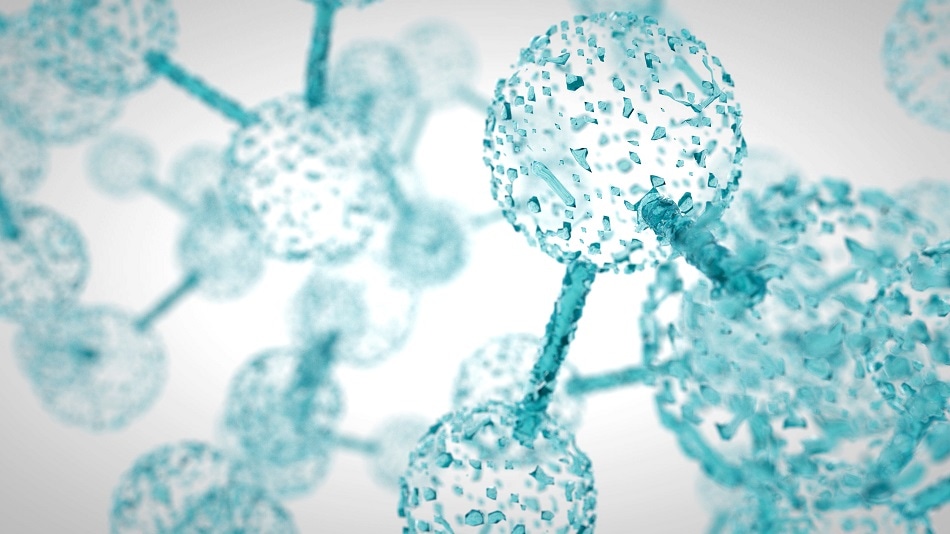Nov 23 2017
 SmirkDingo/ Shutterstock.com
SmirkDingo/ Shutterstock.com
A technique for producing Europium (II) oxide nanoparticles has been devised by the Collaborative Research Centre CRC 1214 at the University of Konstanz. Europium (II) oxide, or EuO, nanoparticles are ferromagnetic semiconductors that find their use in data transport and data storage.
In the past decade, ferromagnetic semiconductors have gained greater attention. The characteristics of these materials render them propitious and functional to be applied in the area of spin-based electronics, or spintronics. Spintronics is highly significant for storing and transferring information. As part of an interdisciplinary partnership, scientists from the University of Konstanz were successful in devising a technique for producing the EuO nanoparticles — a ferromagnetic semiconductor that has exceptionally propitious characteristics. The team also showed that the nanoparticles have magnetic characteristics due to their structure. The outcomes of this collaborative project have been reported in Advanced Materials, a scientific journal, on November 20th, 2017.
The partnership between the research teams headed by Professor Sebastian Polarz (inorganic chemistry), Professor Mikhail Fonin (experimental physics), and Professor Ulrich Nowak (theoretical physics) from the University of Konstanz, and also the electron microscopy group of the Leibniz Institute for Solid State and Materials Research Dresden (IFW Dresden) led by Dr Axel Lubk, was performed within the framework of the University of Konstanz’s Collaborative Research Centre (SFB) “Anisotropic Particles as Building Blocks: Tailoring Shape, Interactions and Structures”.
“Without the cooperation of these research teams, we could not have achieved these results,” stated Bastian Trepka, who is the lead author of the paper and a member of Sebastian Polarz’s research group Functional Inorganic Materials, which produced the nanoparticles.
The characteristics of magnetic and anisotropic nanoparticles have been the focus of the A5 research project of the SFB. The term anisotropic indicates that the electronic, optical or magnetic characteristics as well as the shape are not similar in all spatial directions of the particle. This enables the analysis of the new and enhanced characteristics of nanostructured materials, and also the additional characteristics brought about by anisotropy.
Synthesizing nanoparticles from ferromagnetic semiconductors such as Europium (II) oxide is highly difficult, specifically in anisotropic geometry. Most importantly, the particles with the anticipated new and astonishing characteristics also ought to be anisotropic.
The aim is to deepen our understanding so that we can modulate and access the properties of nano-systems on demand.
Bastian Trepka, Lead Author of the Paper
The researchers adopted their unique technique and were successful in synthesizing anisotropic and high-quality EuO nanoparticles that can be adopted to detect the effects of structure property.
The technique is dependent on a two-stage procedure. In the first stage, a hybrid material comprising of inorganic and organic components is synthesized, where the material is hitherto anisotropic. In the subsequent stage, europium vapor is used to treat the hybrid material. Consequently, the material is chemically transformed into EuO. Here, the shape of the nanoparticles is tubular.
This method is interesting because it is not limited to tubular forms. It is also possible to produce rods.
Bastian Trepka, Lead Author of the Paper
Moreover, the scientists were successful in showing that the magnetic characteristics of the Europium (II) oxide semiconductor are originally due to the shape of its nanostructure, that is, its anisotropy. Upon subsequent treatment of the material to produce counter-evidence, the tubular shapes vanished, leading to disparate characteristics. “The experimental physicists carried out measurements that confirmed the results that had been simulated by the theoretical physicists. This enabled us to develop ideas as to how the structure brings about this particular magnetic behaviour,” stated Trepka.
What is really special about our process is the separation of structure control and chemical transformation. We can obtain different shapes from the same material by influencing the shape through process control. This way we will always get the material to assume the shape we need.
Bastian Trepka, Lead Author of the Paper
Considering Europium (II) oxide, it is a topotactic nanotransformation that preserves its crystalline direction, that is, the tubular shape is retained even after the treatment.
“An intelligent material with a variety of properties,” stated Bastian Trepka, referring to Europium (II) oxide. Moreover, it has a simple crystalline structure. “We can explain changes in properties with appeal to the crystalline structures, which are pre-determined.” This is optimal for fundamental research.